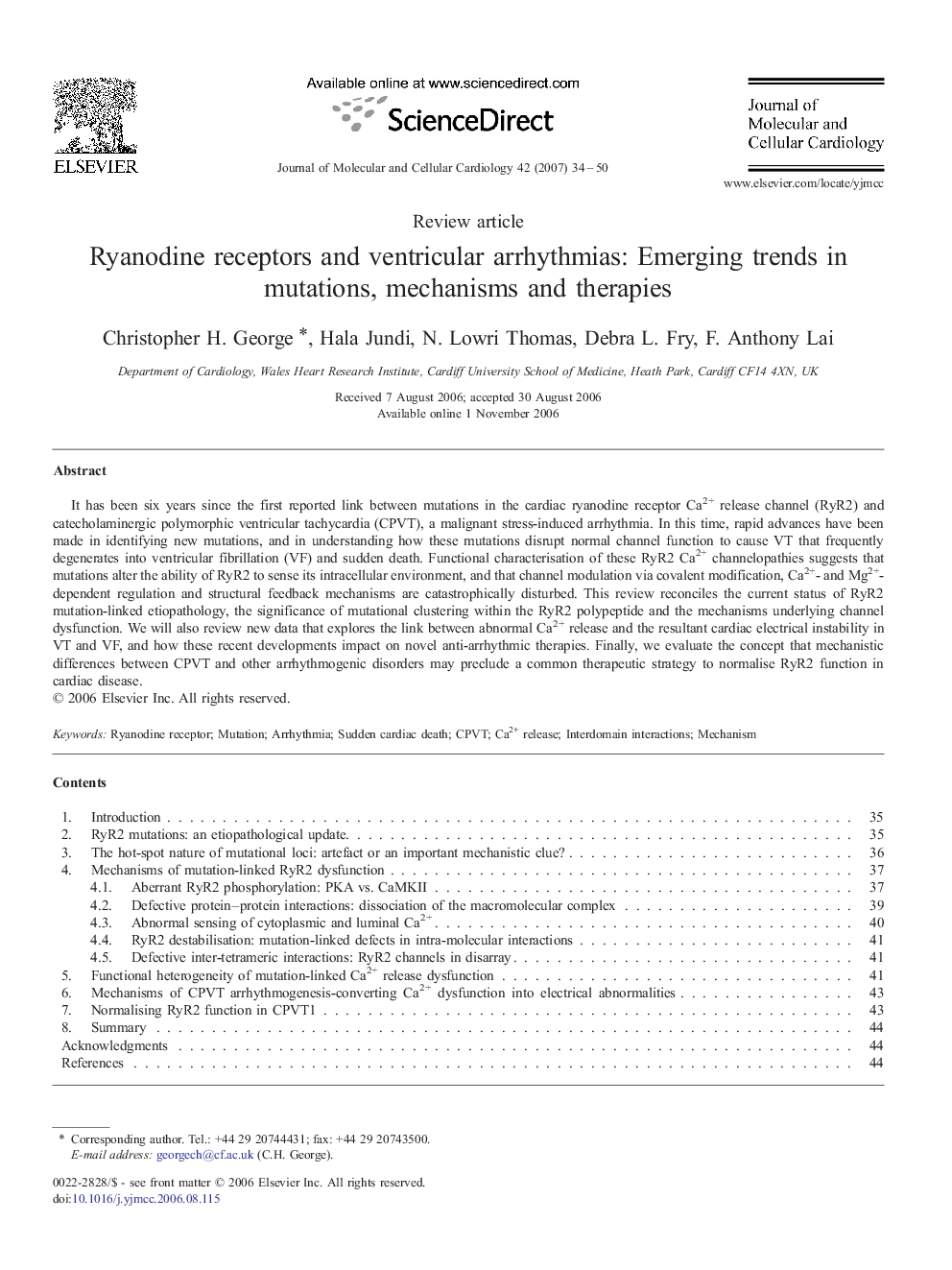| Article ID | Journal | Published Year | Pages | File Type |
|---|---|---|---|---|
| 10954265 | Journal of Molecular and Cellular Cardiology | 2007 | 17 Pages |
Abstract
It has been six years since the first reported link between mutations in the cardiac ryanodine receptor Ca2+ release channel (RyR2) and catecholaminergic polymorphic ventricular tachycardia (CPVT), a malignant stress-induced arrhythmia. In this time, rapid advances have been made in identifying new mutations, and in understanding how these mutations disrupt normal channel function to cause VT that frequently degenerates into ventricular fibrillation (VF) and sudden death. Functional characterisation of these RyR2 Ca2+ channelopathies suggests that mutations alter the ability of RyR2 to sense its intracellular environment, and that channel modulation via covalent modification, Ca2+- and Mg2+-dependent regulation and structural feedback mechanisms are catastrophically disturbed. This review reconciles the current status of RyR2 mutation-linked etiopathology, the significance of mutational clustering within the RyR2 polypeptide and the mechanisms underlying channel dysfunction. We will also review new data that explores the link between abnormal Ca2+ release and the resultant cardiac electrical instability in VT and VF, and how these recent developments impact on novel anti-arrhythmic therapies. Finally, we evaluate the concept that mechanistic differences between CPVT and other arrhythmogenic disorders may preclude a common therapeutic strategy to normalise RyR2 function in cardiac disease.
Keywords
Related Topics
Life Sciences
Biochemistry, Genetics and Molecular Biology
Cell Biology
Authors
Christopher H. George, Hala Jundi, N. Lowri Thomas, Debra L. Fry, F. Anthony Lai,
